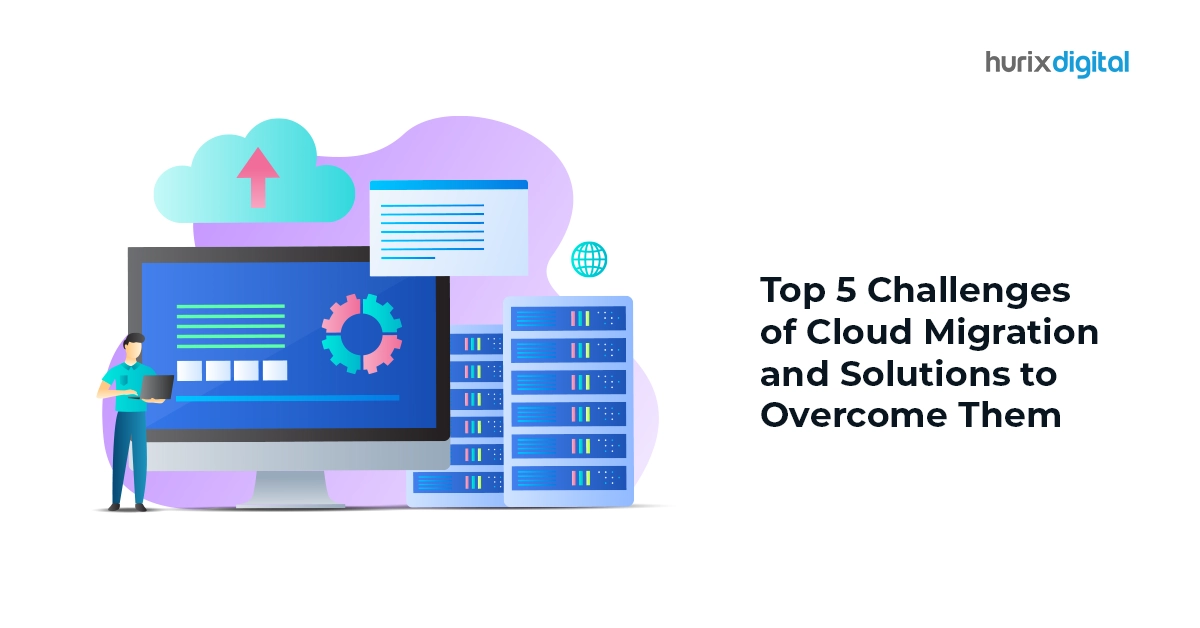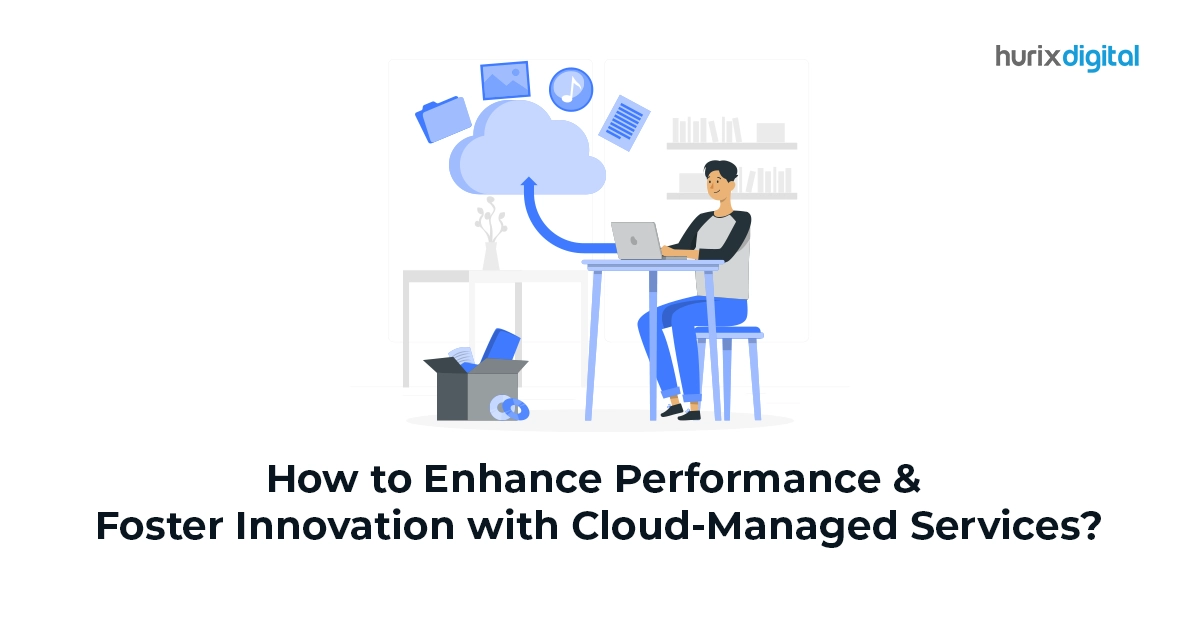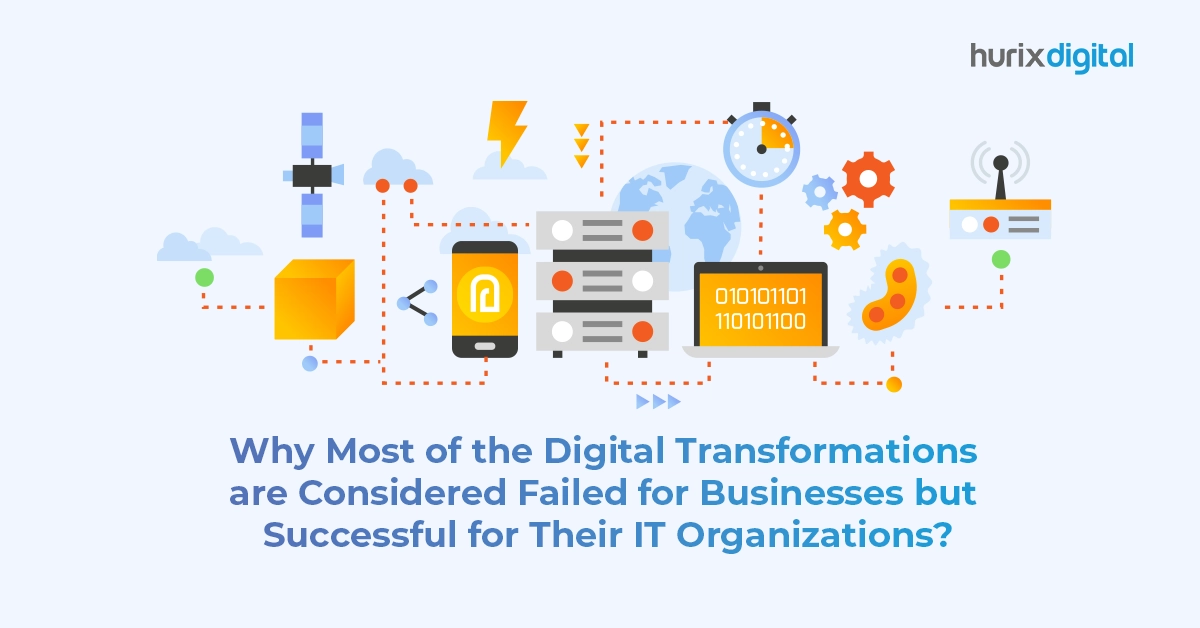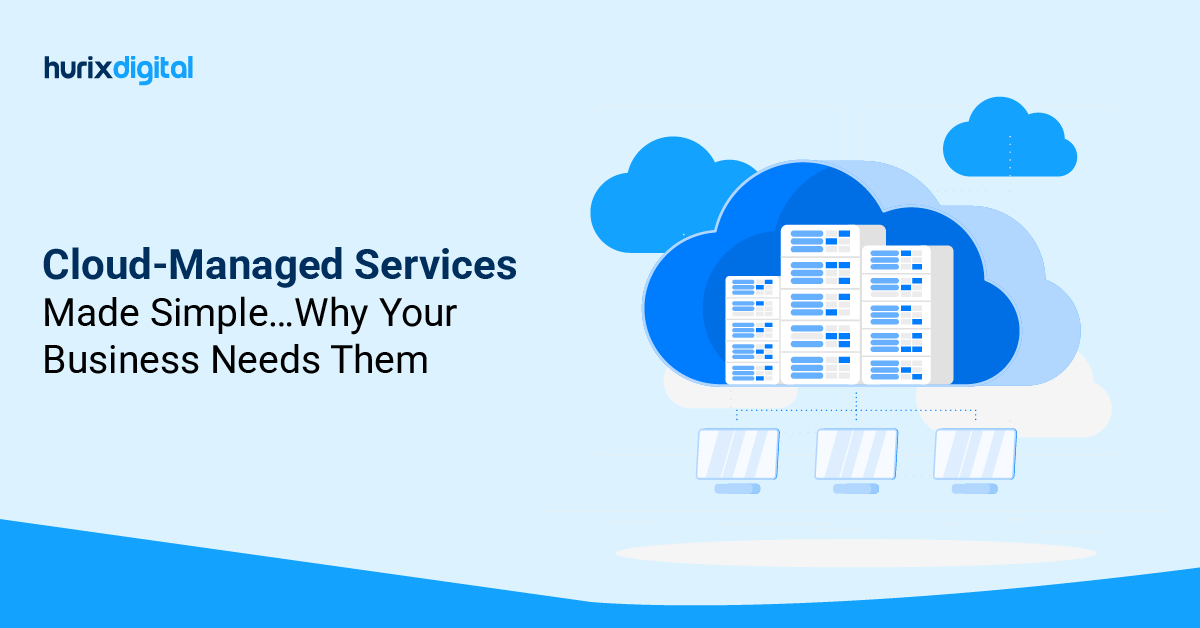
Top 5 Challenges of Cloud Migration and Solutions to Overcome Them
Summarize with:
Cloud migration involves transferring important data storage, applications, and other digital assets of your organization from on-premise data centers to cloud-based ones.
Nowadays, more companies are opting for cloud migration because of attractive benefits. For instance, it offers more availability of critical applications or data, enhanced security, lower long-term expenses, simplified management, and scalability with business demands.
However, some major cloud migration challenges make companies hesitate. So, if you’re planning to switch to the cloud, you must know about the top challenges and ways to overcome them!
Table of Contents:
Top 5 Challenges of Cloud Migration with Solutions
1. No Cloud Migration Strategy
Often, businesses learn about several benefits of the cloud and decide to migrate to it. However, they dive into it even before creating a strategy for it. Without cloud migration planning, they might not choose the most suitable cloud, which prevents them from enjoying the full benefits of the cloud.
For instance, there are private, public, and hybrid cloud deployments, each with different benefits and shortcomings. Different cloud distribution models (SaaS, PaaS, etc.) are adjusted for diverse use cases.
Consequently, the lift-and-shift model, app modernization and refactoring, and re-platforming methods play significant roles in the transition process. However, the lift-and-shift approach isn’t suitable for business-critical proprietary applications.
Solution
Choose a solid cloud migration strategy for your business. Start by analyzing the critical business infrastructures, assets, and objectives. This will help you select the right strategy and highlight everything that needs to be integrated.
Consider all applications that must be moved, downtime-related costs, and data and processing costs. You must also have a plan to reconstruct critical cloud systems after the migration is successful. Once you have taken care of these, break down the strategy into minute steps to make it easier to follow.
Also Read: The Revolution of AI in Cloud Computing: Transforming Education and Work
2. Cloud Environment Adoption Resistance
Migrating to the cloud leads to several changes in the workflow. There are also some disruptions due to new processes, systems, and leadership. People within the organization may feel that they’ll lose all control over data and information.
So, they often pose one of the greatest challenges by resisting change. If you don’t resolve this resistance among employees, the journey will be rocky.
Solution
Ensure everyone is ready to embrace the transformation. Implement a change management plan throughout the migration. Get your top-level leaders involved to help others adopt it smoothly.
Make the leaders understand:
- Business needs that led to this change
- Objectives behind opting for cloud platforms
- Benefits of this change
Ask them to then communicate these pointers to the employees in their team.
Train employees to master the cloud environment, cloud migration tools, and processes. Involve everyone in the cloud adoption procedure. Let them share their concerns and address them to support them through the process.
Consequently, make sure the cloud migration solutions are easy to use and understand. This will help the issue more.
3. Excessively High or Uncertain Cloud Costs
Cloud migration reduces expenses eventually with enhanced procedures, streamlined workflows, and lower administrative costs. It can even reduce IT operating costs in the long run,
However, the upfront price of moving to the cloud is expensive. In fact, if the business fails to evaluate other indirect project expenses ahead of time, the expenses might shoot up.
This can include the cost of transforming the business for cloud computing, vacated data center capacity, data migrations, demand for new skills, wrong mitigation plans, compatibility issues, the absence of a data recovery plan, and the overall financial effect.
Solution
The only way to avoid uncertain high expenses during cloud migration is through planning and preparation. Discuss it with your cloud service provider to identify all sorts of hidden expenses related to cloud migration before committing.
Here are some expenses that you must consider in your cloud migration plan:
- Consultation
- On-premise data management
- Database upgrades
- Cloud platform infrastructure costs
- Migration costs
- Financial risk of sluggish adoption
- Post-migration training
- Refactoring
- Application and code changes
- Monthly/annual license
- System maintenance
If you miss out on any of these, cloud migration can be challenging.
4. Data Security and Compliance Risks
This is one of the major reasons businesses hesitate to move to the cloud. They fear sharing confidential data with third-party security vendors, even though cloud environments label themselves as secure.
They want more assurance that all data and applications are secured on the cloud as much as on-premise. This mostly revolves around concerns related to application and technology.
Data security and compliance risks arise from data breaches during migration when there are
- Weak access control on sensitive data
- Inadequately built applications around information and systems the business manages
Such data breaches can lead to service disruption.
Solution
Cloud platforms are built with a massive focus on security. Reputable cloud vendors are already equipped with industry-grade security systems, which creates a holistic cloud environment.
Cloud vendors understand the importance of a secure cloud migration. They ensure the system helps all data pass through an ideal routable path where the data is always secured with the firewall.
This keeps your data masked from third parties during migration. Additionally, it ensures compliance and eliminates risks such as data theft.
However, you can always seek more assurance from your cloud vendor with these questions before investing in it:
- Where will the platform store data?
- Will the data be end-to-end encrypted?
- Which process is followed for data migration from the cloud?
- What security policies and processes are used?
- What security regulations do they comply with (e.g., HIPAA, ISO 27001, PCI-DSS, and so on)?
With these answers, you can understand what you can expect from the cloud platform before investing in it.
5. Skill Gap
Cloud migration implies a new environment with new technologies, third-party integrations, and processes. Thus, businesses need to invest in upgrading employee skills.
Employees who lack the required skills or can’t keep up with training fear cloud migration will make them lose their jobs.
Solution
Hire a company with plenty of experience in cloud migration. They can upskill your team and assist throughout the cloud migration process.
They will identify the perfect strategy for your company’s smooth transition to the cloud. Their team will have skilled engineers who are familiar with the overall cloud migration process.
You can also hire individual talents with the right skills to fill in some positions immediately.
Also Read: Maximizing Customer Experience: Key Performance Indicators for Cloud-Managed Services
The Bottom Line
Cloud migration, though beneficial, is full of challenges. However, they can be easy to handle if you anticipate the top problems and have a guide to navigate them. Remember to prepare well and keep your existing team informed of every move. Train them and clarify all doubts.
Lastly, remember to contact a reliable cloud solutions provider like Hurix Digital. Our team is well-equipped to support you throughout cloud migration, ensure your business overcomes all relevant challenges, and chase growth.
Contact us today for the best cloud migration experience!
Frequently Asked Questions (FAQs)
Q1: How to reduce downtime during migration?
A1: Use phased migration, pilot testing, redundancy, and fallback planning.
Q2: What ensures optimal resource mapping?
A2: Perform workload analysis and align instance types with usage patterns.
Q3: How can data transfer be sped up?
A3: Use direct connect, high-bandwidth pipelines, or migrate large datasets offline.
Q4: What compliance issues arise?
A4: Regional data residency, encryption standards, access controls, and audit log retention.
Q5: How do I manage skills gaps?
A5: Provide cloud training, consult managed providers, or hire hybrid specialists.
Summarize with:

Vice President and Strategic Business Unit Head – Cloud Services
A top technology management voice on LinkedIn with 20 Years of experience in Information Technology, Cloud Services, Digital Transformation, Application Modernization, Managed Services, IT Security Engineering and Operations Management. An avid technology Leader, Leadership Speaker, Author & Coach.
 A Space for Thoughtful
A Space for Thoughtful 



